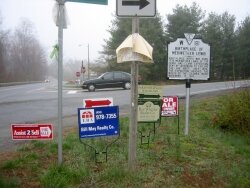Half empty or half full? These days, how to know what to believe?
Last week, Charlottesville blogs and news sites headlined the alarming statistic that single-family home sales in Albemarle County dropped 43 percent from June to July. This news followed the report produced by the National Association of Realtors stating that sales of existing homes dropped to a seven-month low in June as inventories increased, more contracts were canceled, and 30 percent of transactions involved distressed dwellings. Since contracts closing this summer were likely written during the typically strong spring market, does this mean that we’re going to see a continuing decrease throughout 2011?
Well, that depends on who you ask and where you get your data.
Real estate professionals maintain that market activity has been affected by the 2010 homebuyer tax credit, fluctuating interest rates, and overall economic instability. Their point is valid; the effects of these influences make it difficult to determine what a “normal” market looks like.
Those with a more jaundiced, but no less valid, view hold the position that the recent drop in sales, combined with rising unemployment and a steady supply of short sales and foreclosures, could mean a continued slowdown and prolonged recovery period.
Far from elucidating the matter, a couple of recent mid-year reports add to the confusion.
Let’s start with the report recently posted by RealtyTrac, the leading online marketplace for foreclosed properties, which cites a foreclosure rate of 1 in every 887 housing units for the state of Virginia. The Charlottesville rate (1 in 1,981) is significantly lower than either the statewide figure or the national rate (1 in 583). The report also notes that while foreclosure activity– including default notices, banked-owned properties, and auctions– was up on a month-to-month basis, overall filings were 29 percent lower than they were during the first half of 2010.
Good news, right?
On the surface, yes, although a recent article in the New York Times suggests that the default rate may be slowing due to a major backlog of foreclosed properties rather than to market recovery. In New York, as in many other states, foreclosures are processed by the courts, and it’s estimated that it could take up to 62 years to clear the current inventory. According to industry analysts, delays in procedures created by such an overload could result in as many as one million foreclosures in 2012 that should have happened in 2011.
In Virginia, time isn’t an overwhelming factor since foreclosures can be handled by either a judiciary or a non-judiciary process. And a foreclosure rate of less than one percent should mean that our area can anticipate a faster recovery. Right?
Well, maybe.
A June story on NBC29.com reported that Charlottesville area foreclosures have increased nearly 25 percent in the past year. Even with our area’s lower-than-average foreclosure rate, that’s a sobering statistic.
The midyear report produced by the Charlottesville Area Association of Realtors indicates that our local inventory is diminishing, as is the average time it takes to sell a house. While the market is affected by the introduction of foreclosures and short sales, our area has relatively few of these to contend with, as evidenced by RealtyTrac’s report.
But the introduction of distressed properties may mean that home prices overall will drop and won’t stabilize until the supply of cheap properties has diminished. And, as Business Week reported earlier this year, Fannie Mae and Freddie Mac are faced with the task of releasing a record housing inventory of $24 billion without flooding markets and depressing prices.
As much as many Charlottesvillians might like to believe otherwise, it seems apparent that our recovery depends on national market recovery, which will be heavily influenced by the manner in which the government-controlled mortgage companies handle the release of their staggering inventory.
